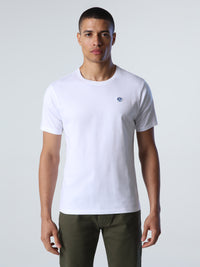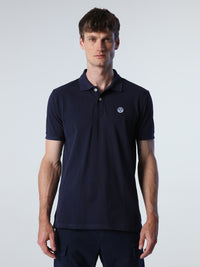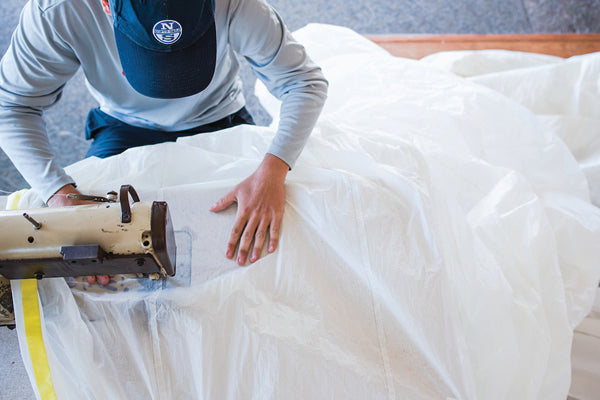THE DIFFERENCE BETWEEN RACING SAILS AND CRUISING SAILS
North Expert Neil Mackley explains what to look for when it comes to Performance, Design, and Materials
People with sailboats use them in many ways, but broadly speaking we define them as either cruising or racing. Cruising might be an hour-long daysail, with only one sail hoisted, or it might last a year or more and take you across the South Pacific. A race, likewise, can last one short evening before sunset, or it can take you to the highest levels of competition at the Olympics or across the ocean. The proper sails for each of these activities varies widely, but at the level most people engage in cruising and racing, we can simplify the differences between the sails required if we talk about performance, design, and materials.
Performance expectations
Both cruising and racing sails are designed for performance, but for each type, performance is measured differently. The ultimate measure of performance in a racing sail is speed, although other factors can play a role. Great performance from a cruising sail is more about ease of handling and durability. In simple terms, speed is derived from sail materials and sail shape, which need to match each other. Depending on how much speed is sought, this often comes at a cost to ultimate durability. Do you want to be able to sail a minute faster on a long upwind leg, or do you want to be able to hoist and fly the same sails 10 years from now? Given how many different types and sizes of sailboats we have on the water and the wide variety of sailmaking materials, it’s not as simple as choosing a durable cruising sail or a speedy racing sail for most boats; we need to learn about some of the other differences between racing and cruising sails to help with our selection. Chief among them is the owners’ expectations of their sails. Aboard a full-race TP 52, where pure performance is the only measure of a sail, after one windy regatta, a team will often decide that their mainsail is finished and should be replaced. Most racers sailing below the pro level, typically on smaller boats, often feel comfortable replacing sails seasonally and more selectively, making certain sails last multiple seasons. By comparison, aboard a cruising boat, some owners will think their sails will be fine for seven to 10 years before the material and sail shapes are so compromised that the boat’s performance is seriously compromised. 3Di RAW, IC37 by Melges 📸 Hannah Lee Noll
3Di RAW, IC37 by Melges 📸 Hannah Lee NollDesign differences
One big difference we see between race and cruising sails is that, in an average race, the boats will be sailing against the wind up to 50 percent of the time. When cruising boats are sailing, by contrast, they rarely sail hard upwind; typically, when the wind is blowing from the direction that cruisers want to go, they will choose to go somewhere else, wait for the wind to change, or hoist the main to steady the boat and turn on the engine. As a result, cruising sail shapes are often designed towards better performance when reaching, with sheets cracked off and sails twisted. Cruising sails are designed with slightly rounder shapes. The entry angles are similar, but the sail may be a little bit deeper and the aft section of the sail is rounder to allow for better shape as the sheet is eased. In contrast, the crew of a race boat is usually trying to sheet the sails very hard, as close to the centerline as possible, so their sails are flatter, with more open leeches. Typically when a race boat begins to reach, the crew changes to different sails, such as jib tops or code sails, often with staysails, too. Dacron crosscut cruising sail option
Dacron crosscut cruising sail optionThe material difference
The materials used for sails not only vary for cruising and racing, but also depending on the length and weight of the boat and the resulting loads the sails carry. Commonly, jibs and mainsails are made from panels of sailcloth, either Dacron or light laminates with higher-strength fibers. Our company, North Sails, also makes a proprietary type of molded sail called 3Di. Dacron has been the primary material for paneled jibs and mainsails for more than half a century, with some improvement over that span of time. It remains a common option for many boats, particularly cruising boats. However, light laminate sails have been developed that carry the loads far better than Dacron or other polyesters, which is a performance bonus to both cruisers and racers. They incorporate ultra-high molecular weight polyethylene fibers; Spectra and Dyneema are examples of this material. These materials dramatically reduce the amount of stretch in the sail and also make the sail much more durable because its sandwich construction using Mylar film provides resistance to chafe. One downside to these light laminates is that they are subject to small amounts of permanent stretch known as “creep,” but they work much better than Dacron because they stretch far less. For these reasons alone, few racing sails are made of paneled Dacron any more, except for small boats and in racing classes where rules prohibit laminate sails. But the advantages of laminates go well beyond maintaining a designed shape and lasting longer, and as a result, cruising sails are increasingly being made of laminates as well. Take for example a mainsail for a cruising boat made of 7-ounce Spectra rather than 10-ounce Dacron. The weight savings is significant: a 90-pound Dacron sail might weigh only 55 pounds if made of Spectra. When you consider that the center of gravity for the sail might be 30 feet up, that’s a dramatic reduction in weight. A boat with a Dacron sail will heel and pitch a great deal more. This can have a massive effect on a cruising boat with in-mast furling; even when the sail is reefed, all that weight remains aloft. Yet there’s more: When your boat heels a few degrees less, you don’t have to reef as early. If you have a Dacron sail up, it will stretch and get deeper under the loads, causing yet more heel. If you have a laminate sail, it will stay much flatter and offer more forward force rather than heeling. The sail designer of a laminate sail understands this dynamic and can design a shape that’s deeper than the Dacron sail, providing more power in lower wind ranges. One final reason that larger cruising boat owners choose sails with more advanced technology is that many cruising boats don’t have ways to make significant sail and rig adjustments underway, for example changing the tension on outhaul and permanent backstay. Racers have many controls and can bend their masts significantly to flatten or deepen their sails. Most cruising boat sailors have comparatively few such controls at their disposal. NPL Tour , upwind
NPL Tour , upwindRacing and Cruising 3Di Sails
In recent years, racing and cruising sails are differentiated within the new approach to making sails taken here at North Sails; called 3Di, the sails are uniquely constructed on a mold that is shaped for each specific sail. They have been adopted by many racers already, but cruisers are also using them as there are a range of 3Di options that address the same needs for speed, durability, and weight. While 3Di sails are a more premium option, we believe their performance attributes and longevity make them worthwhile for an increasing number of sailors. Many racers use the version we call 3Di RAW, often made of pure carbon but also by blending different mixtures of fibers—carbon, polyester, aramid (Kevlar), and UHMWPE (Spectra/Dyneema). This provides even better shape control than laminates. Because of carbon’s extra strength, some sails can be made with fewer fibers and less overall weight. At the other end of the range, small-boat and cruising-boat owners may choose a less expensive version called 3Di NORDAC, which are molded composite sails using spread-filament tapes of polyester (Dacron). In between those two, performance-oriented cruising sailors may choose a style of 3Di called ENDURANCE, which uses combinations of carbon, Spectra and aramid filaments and then adds an exterior layer of film that helps with chafe resistance. North has a third range of 3Di called OCEAN for the largest cruising yachts and provides high strength and ultimate durability. These sails contain Spectra and aramid filaments and gain durability from protective outer surfaces of woven polyester taffeta tapes. 3Di NORDAC, cruising 📸 Amory Ross
3Di NORDAC, cruising 📸 Amory RossSummary of sail differences based on boat size
The differences between racing and cruising sails can also be viewed across three size ranges—small (under 35 feet), medium-sized (35 to 45 feet) and large (longer than 45 feet). Among racing boats under 35 feet, sails are often made with light laminates, incorporating Mylar or other film and fibers made of Spectra or aramid, and in many cases, different 3Di products begin to appear. In restricted classes, some race sails will be made of Pentex (a low-stretch polyester) and others of Dacron. Cruising sails for both small and mid-size boats are typically still made with Dacron, laid out either in cross-cut or radial panel configuration. The warp-oriented Dacron sails such as North’s Radian fabrics cost a bit more but deliver notably better performance than the stretchier crosscuts. But somewhere around 40 feet in length—and definitely by 50 feet—Dacron is no longer a rational option for cruising boats. Given the loads, the material doesn’t hold it’s design shape long, and it’s heavy, typically a 10- or 11-ounce cloth, so the boat heels more easily and the sail is harder to furl. At this size, light laminate sails and North 3Di ENDURANCE and OCEAN sails become the norm. Mid-size boats that both cruise and race will choose light laminates or 3Di ENDURANCE, balancing the small increase in weight for an extra layer of material for durability. For single-purpose race boats, both mid-sized and larger, using Dacron is out of the question and the primary question becomes whether to buy laminated sails or choose an advanced 3Di RAW sail. NPL Tour Ultra, racer/cruiser
NPL Tour Ultra, racer/cruiserDownwind cruising and racing sails
The good news for racers and cruisers is that the America’s Cup has spun off significant developments in downwind sails for both. For many years, the most common downwind sail for a cruising boat has been the asymmetrical spinnaker, tacked to the bow, also known as a gennaker. Easy sail handling is critical for cruisers, so the gennaker is typically hoisted inside a “sock” that is itself raised when it’s time to fill the sail. When it’s time to take it down, the sock is pulled down around the sail before the sail is lowered to the deck. Early asymmetrical spinnakers were unstable and hard to trim, but the designs took advantage of America’s Cup technology, and all of a sudden we could produce full-molded tri-radial cruising sails. Now the shape of the sail is built into every seam instead of just the cross panels. As a result, the sails have a more natural draft position and fly more steadily. NPC Downwind, Premier Cruise, Oyster Yachts
NPC Downwind, Premier Cruise, Oyster Yachts NPL Downwind code zero on a J/121 racer/cruiser.
NPL Downwind code zero on a J/121 racer/cruiser.














